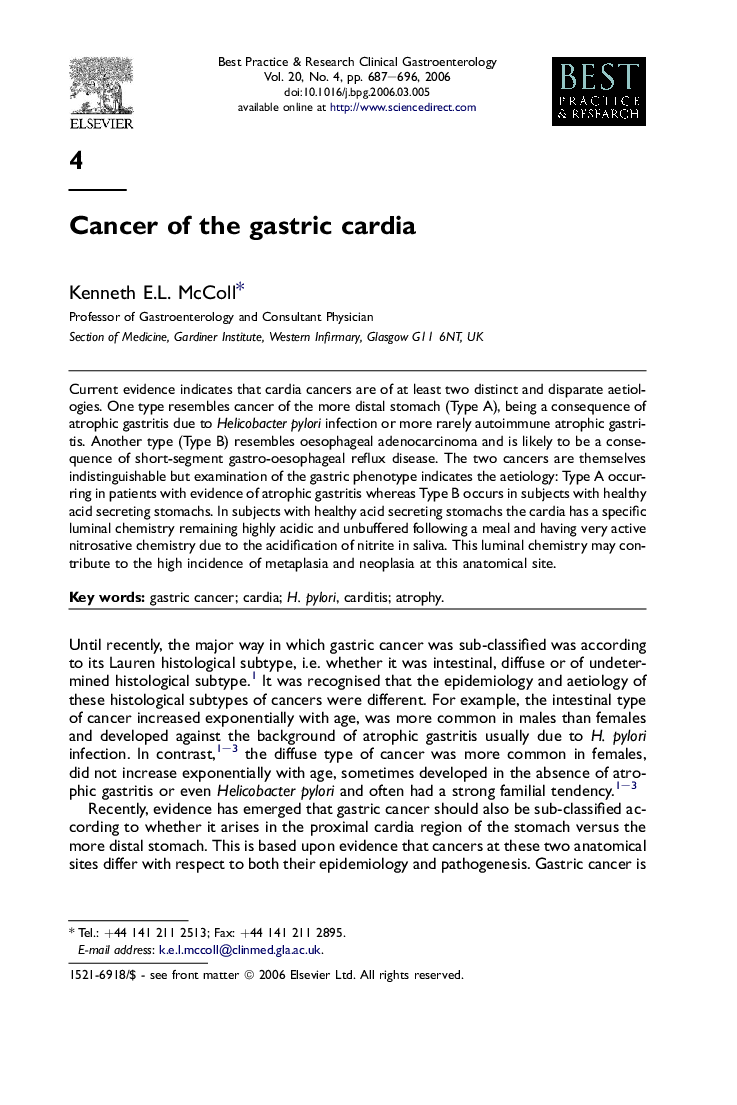| Article ID | Journal | Published Year | Pages | File Type |
|---|---|---|---|---|
| 3254824 | Best Practice & Research Clinical Gastroenterology | 2006 | 10 Pages |
Current evidence indicates that cardia cancers are of at least two distinct and disparate aetiologies. One type resembles cancer of the more distal stomach (Type A), being a consequence of atrophic gastritis due to Helicobacter pylori infection or more rarely autoimmune atrophic gastritis. Another type (Type B) resembles oesophageal adenocarcinoma and is likely to be a consequence of short-segment gastro-oesophageal reflux disease. The two cancers are themselves indistinguishable but examination of the gastric phenotype indicates the aetiology: Type A occurring in patients with evidence of atrophic gastritis whereas Type B occurs in subjects with healthy acid secreting stomachs. In subjects with healthy acid secreting stomachs the cardia has a specific luminal chemistry remaining highly acidic and unbuffered following a meal and having very active nitrosative chemistry due to the acidification of nitrite in saliva. This luminal chemistry may contribute to the high incidence of metaplasia and neoplasia at this anatomical site.
